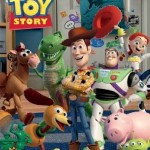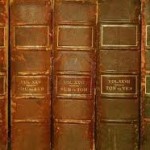 This post is a glimpse into the world of literary English.
This post is a glimpse into the world of literary English.
In this area of the English language we encounter a very flowery and poetic style. We see imagery, figures of speech, metephor, simile, metonymy, allegory, personification and pathetic fallacy.
We are confronted by patterns of sound such as assonance, alliteration and onomatopoeia.
We also see irony, hyperbole, oxymoron and paradox.
Let us take a journey into the world of English language that is both complex yet sublime.
Figurative language:
Imagery is the language that produces pictures in the mind. The term can be used to discuss the various stylisitic devices listed below, especially figures of speech ( = ways of using language to convey or suggest a meaning beyond the literal or actual meaning of the words)
Metaphor is the imaginative use of a word or phrase to describe something else, to show that the two have the same qualities:
And all the men and women merely players.
_ William Shakespeare, As You Like It
In simile the comparison between the two things is made explicit by the use of the words ‘as’ or ‘like’:
> I wandered lonely as a cloud
_ William Wordsworth, Daffodils
>Like as the waves make towards the pebbled shore,
So do our minutes hasten to their end.
_ Shakespeare, Sonnet 60
Metonymy is the fact of referring to something by the name of something else closely connected with it, used especially as a form of shorthand for something familiar or obvious, as in ‘I’ve been reading Shakespeare’ instead of ‘ I’ve been reading the plays of Shakespeare’.
Allegory is a style of writing in which each character or event is a symbol representing a particular quality. In John Bunyan’s Pilgrim’s Progress Christian  escapes from the city of Destruction, travels through the Slough of Despond, visits Vanity Fair and finally arrives at the Celestial City. He meets characters such as the Giant Despair and Mr Worldly Wiseman and is accompanied by Faithful and Hopeful.
escapes from the city of Destruction, travels through the Slough of Despond, visits Vanity Fair and finally arrives at the Celestial City. He meets characters such as the Giant Despair and Mr Worldly Wiseman and is accompanied by Faithful and Hopeful.
Personification is the act of representing objects or qualities as human beings:
> Love bade me welcome:yet my soul drew back, Guilty of dust and sin.
_George Herbert, Love
Pathetic fallacy is the effect produced when animals and things are shown as having human feelings. For example, in John Milton’s poem, Lycidas, the flowers are shown weeping for the dead shepherd, Lycidas. And in more recent times  animation movies such as Toy Story show toys as having feelings and personality just as though they were humans.
animation movies such as Toy Story show toys as having feelings and personality just as though they were humans.
Patterns of sound
Alliteration is the use of tthe same letter or sound as the beginning of words that are close together. It was used systematically in Old English poetry but in modern poetry is generally only used for a paticular effect:
> on the bald street breaks the blank day.
_Alfred, Lord Tennyson, In Memmoriam
Assonance is the effect created when two syllables in words that are close together have the same vowel sound but different consonants, or the same consonants but different vowels:
> It seemed that out of battle I escaped
Down some profound dull tunnel long since scooped….
_ Wilfred Owen, Strange Meeting
Onomatopoeia is the effect produced when the words used contain similar sounds to the noises they describe:
> murmering of innumerable bees
_ Tennyson, The Princess
Irony is the use of words that say the opposite of what you really mean, often in order to make a critical comment.
Hyperbole is the use of exaggeration:
> An hundred years should go to praise
Thine eyes and on thy forehead gaze
_ Andrew Marvell, To His Coy Mistress
An Oxymoron is a phrase that combines two words that seem to be or are the opposite of each other:
> Parting is such sweet sorrow
_ Shakespeare, Romeo and Juliet
Or in more recent times the phrase scientific theory
A paradox is a statement that contains two opposite ideas or seems to be impossible:
> The Child is father of the Man.
_ Wordsworth, ‘My heart leaps up….’
Ok so that was a look behind the words that fill the pages of so much literature especially classical literature. It is a glance into the realm of writers, poets and philosophers, whose great or inspiring works have at their core a literary writing method, technique and style that is not an accident but a science….the science of writing, the knowledge of which is what makes a great writer, great.
Good luck with your English language learning and your literary writing skills.
Simon
Ok English



Good Afternoon Sir, I’ am a post graduate candidate at the doctoral school Annaba/ Algeria. I am writing this message hoping to find some help in writing my thesis. so, would you like to give me a helping hand. Waiting your answer for my request.
Of Course Hassina if I can help I will 🙂
thanks Mr Simon for these valuable information 🙂
Thank you Yakoubi !!! 🙂